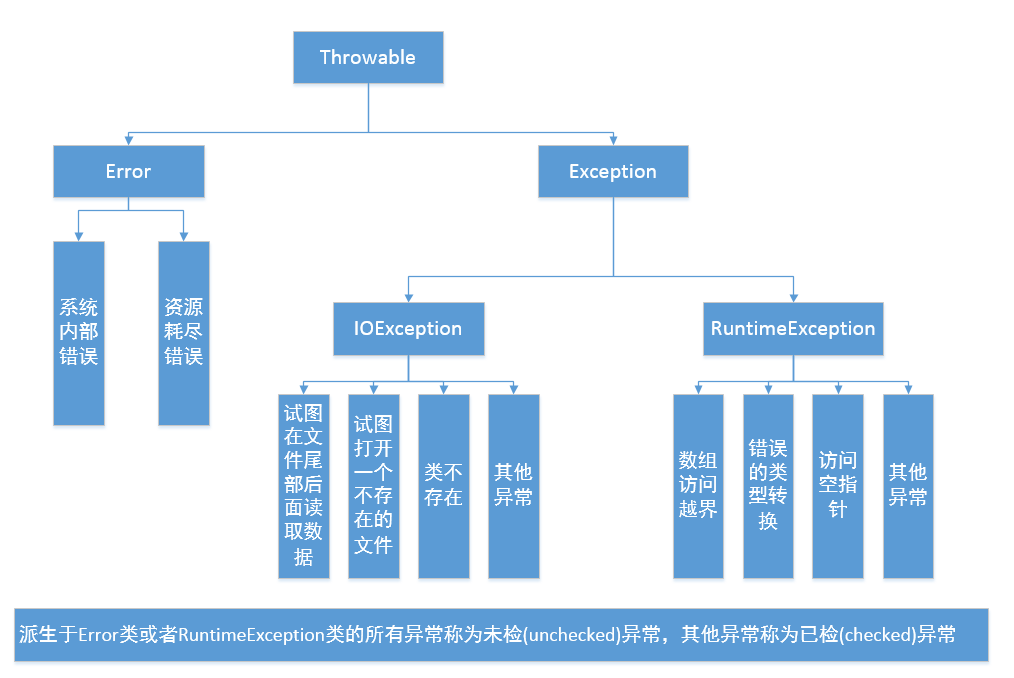自动拆装箱
//测试自动拆装箱
public class AutoboxAndUnbox {
public static void main(String[] args) {
//jdk5.0后,自动装箱,编译帮我们改进代码:Integer a = new Integer("100");
Integer a = 100;
Integer b = 200;
//int c = new Integer("1000");
int c = new Integer(1000); //自动拆箱,编译器改进:new Integer(1000).intValue();
Integer d = null;
int e = d; //d.intValue(); 会抛出空指针异常(NullPointerException)
Integer f = 1234;
Integer f1 = 1234;
System.out.println(f == f1); //false
System.out.println(f.equals(f1)); //true
Integer g = 123;//[-128, 127]之间的数,仍然当做基本数据类型来处理
Integer g1 = 123;
System.out.println(g == g1); //true
System.out.println(g.equals(g1)); //true
}
}Date类
//测试Date类
public class DateTest {
public static void main(String[] args) {
Date d = new Date();
System.out.println(d); //打印当前时间
//获取从时间戳到此时此刻所经历的毫秒数
long t = System.currentTimeMillis();
System.out.println(t);
Date d2 = new Date(1000);
System.out.println(d2.toGMTString()); //1 Jan 1970 00:00:01 GMT
d2.setTime(24324324);
System.out.println(d2.getTime()); //24324324
System.out.println(d.getTime() < d2.getTime()); //false
}
}DateFormat类和SimpleDateFormat类
//测试DateFormat类和SimpleDateFormat类
public class DateFormatTest {
public static void main(String[] args) {
//DateFormat类是抽象类
DateFormat df = new SimpleDateFormat("yyyy年MM月dd日 hh:mm:ss");//MM必须大写
Date d = new Date();
String str = df.format(d); //将时间对象按照格式化字符串转化为字符串
System.out.println(str); //2016年11月30日 10:38:26
String str2 = "1997-7-7";
DateFormat df2 = new SimpleDateFormat("yyyy-MM-dd");
try {
Date d2 = df2.parse(str2);//将字符串按照格式化字符串转化为时间对象
System.out.println(d2);
} catch (ParseException e) {
e.printStackTrace();
}
}
}Calendar类和GregorianCalendar类
注意:
- 月份:1月用0表示,12月用11表示
- 星期:周日是1,周六是7
//测试Calendar类
public class CalendarTest {
public static void main(String[] args) {
//Calendar是抽象类
Calendar c = new GregorianCalendar();
c.set(2001, 1, 10, 12, 23, 34);
Date d = c.getTime();
System.out.println(d); //Sat Feb 10 12:23:34 CST 2001
//测试日期计算
c.add(Calendar.YEAR, 30); //加30年
System.out.println(c);
}
}可视化日历小程序
public class VisualCarlendar {
public static void main(String[] args) throws Exception {
System.out.println("请输入日期(格式1970-01-01):");
Scanner scanner = new Scanner(System.in);
String inputStr = scanner.nextLine();
//将输入的日期字符串转化成为日期
DateFormat df = new SimpleDateFormat("yyyy-MM-dd");
Date inputDate = df.parse(inputStr);
//将日期放进Calendar类进行处理
Calendar calendar = new GregorianCalendar();
calendar.setTime(inputDate);
//记录输入的日期
int date = calendar.get(Calendar.DATE);
//确定当月的1号是星期几
calendar.set(Calendar.DATE, 1);
int startDay = calendar.get(Calendar.DAY_OF_WEEK);
//确定当月最大的天数是多少
int endDay = calendar.getActualMaximum(Calendar.DATE);
System.out.println("一\t二\t三\t四\t五\t六\t日");
//打印空格
for(int i = 0; i < startDay - 2; i++) {
System.out.print("\t");
}
for(int i = 1; i <= endDay; i++) {
//标记输入的日期
if(date == i) {
System.out.print(i + "*\t");
}else{
System.out.print(i + "\t");
}
int temp = calendar.get(Calendar.DAY_OF_WEEK);
//每到星期日换行
if( temp == Calendar.SUNDAY) {
System.out.println();
}
//每打印一次日期加一
calendar.add(Calendar.DATE, 1);
}
}
}异常处理类结构
需要程序员处理的异常是已检异常
带资源的try语句
try(Scanner in = new Scanner(new FileInputStream("F:/DB/abc.txt")),PrintWriter out = new PrintWriter("out.txt")){
while(in.hasNext()) {
out.println(in.next().toUpperCase());
}
}1)、不论这个块如何退出,in和out都会关闭
2)、带资源的try语句自身也可以带catch和finally字句,这些字句会在资源关闭后执行
分析堆栈跟踪元素
public class StackTraceTest {
public static void main(String[] args) {
Scanner in = new Scanner(System.in);
System.out.println("Enter n: ");
int n = in.nextInt();
factorial(n);
}
//求阶乘
public static int factorial(int n) {
System.out.println("factorial(" + n + ");");
Throwable t = new Throwable();
StackTraceElement[] frames = t.getStackTrace(); //获取所有堆栈信息,组成一个数组
for(StackTraceElement f : frames) {
System.out.println(f);
}
int r;
if(n <= 1) {
r = 1;
}else{
r = n * factorial(n - 1);
System.out.println("return " + r);
}
return r;
}
}使用断言
assert关键字有两种用法
1)、assert条件
2)、assert条件:表达式
这两种方式都会对条件进行检测,如果结果为false,就抛出一个AssertionError异常
debug常用快捷键
- F5 单步跳入,遇到函数进入函数内部
- F6 单步跳过,遇到函数不进入函数内部
- F7 单步返回,由函数内部返回到调用处
- F8 一直执行到下一个断点
异常
异常处理的三种方式:
- try…catch…finally语句
- throws关键字(声明异常:将异常交给调用者处理)
- throw关键字手动抛出异常
方法重写中声明异常的原则:
- 父类没有声明异常,那么子类也不能声明异常
- 子类不可抛出原有方法抛出异常类的父类或上层类
- 子类抛出的异常类型的数目不可以比原有方法抛出的还多
自定义异常:
从Exception类或它的子类派生一个子类即可
//自定义异常
public class MyException extends Exception{
//自定义异常一般要两个构造器:
//一个空参构造器,一个是带有详细信息的构造器
public MyException() {
}
public MyException(String message) {
super(message);
}
}






















 500
500

 被折叠的 条评论
为什么被折叠?
被折叠的 条评论
为什么被折叠?








